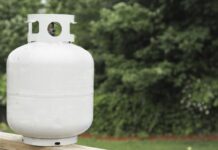It can be challenging to select an ideal water filtration system, especially if you do not know the right filter for the impurities at your home. Regardless, having a water filtration system at your residence can save you and your loved ones from consuming water contaminants that can make you ill.
Therefore, it’s in your best interest to examine your water supply before you head to the Discount Water Filters site or other reputable stores to get a water filter for your home. It’s worth mentioning that a mix of several filtration procedures might be the most effective approach to filtering your water. UV filtration systems, for example, are excellent for removing germs and pathogens. Reverse osmosis is an effective means of removing metal toxins from your water source.
How Filters Work
According to the Centers for Disease Control and Prevention, no single water filtration system can remove all contaminants from your domestic water. Worse still, some filters remove both healthy and hazardous contaminants from the water.
Here’s how water filters work;
Chemical Filtration System
Chemical filters eliminate soluble contaminants in water. It lets water through active substances, which enhances its quality.
Physical Filtration System
They eliminate solid debris from water by straining it. For instance, some filters have solid carbon block medium or micro textile barriers, which aids in the removal of particles. It functions more like how air purifiers catch allergens or dust.
You should use data to establish the cleanliness of your water. You can access this information from EPA-the United States Environmental Protection Agency’s site, assuming that your water source is from a county or city where you reside.
On the other hand, if you’re getting water from other sources such as wells and are unaware of their quality, consider doing tests by yourself or engaging certified professionals who will inform you of your water’s condition.
Water Filtration Techniques
The toxins that each type of water filtering and purifying technique can eliminate vary as listed below.
Filtration Using Activated Carbon
Activated carbon filtration systems utilize active carbon granules to adsorb chemical contaminants. Manufacturers make these microscopic carbon bits extremely sticky. They can efficiently absorb chemicals and pollutants thanks to their large surface area. As water flows through them, their filter draws contaminants that attach to them, producing healthy water. Through activated carbon filtration systems, you can eliminate chlorine-based pollutants. However, they are less efficient at removing toxic metals such as nitrates, fluorine, and salt.
Ion Exchange Filters
Ion-exchange filtration systems generate ions by breaking atoms of pollutants into ions. They’re a suitable alternative for softening water. Hard water is usually highly concentrated with calcium and magnesium ions, temporarily increasing water alkalinity. Hard water passing ion-exchange filtration system has its compounds split into magnesium and calcium ions. Further, an ion filter’s beads capture calcium and magnesium instead of sodium.
This method may extract good minerals from water, replacing them with sodium, which results in elevated sodium concentration in your physiology. Following the trapping of input calcium and magnesium ions, ion filters release their sodium ions as a replacement, producing soft water.
Reverse Osmosis(RO)
Ultrafine filters extract contaminants when water passes through them under pressure. Their partially permeable layer has incredibly tiny pores to prevent impurities from passing. In turn, it also allows water to pass. Achieving equilibrium implies water has to flow across the barrier to balance the solute concentration on both sides. Generally, reverse osmosis helps to prevent pollutants from accessing a membrane’s least desirable end.
Distillation
Distillation involves boiling water and requires no equipment during the purification process. You can buy a water distiller to assist you with that task; however, it does not eliminate chemicals or pollutants. The process involves removing contaminants by boiling water until it steams. Following that, you collect the steam through condensation in a different container.
Water’s boiling occurs at a temperature below that of other pollutants; therefore, the contaminants remain behind as water evaporates. On the other hand, VOCs and organic chemicals have lower boiling temperatures than water. As such, they stay back after distillation.
You should always ensure the water you’re consuming is safe and healthy. With various water purifying technologies in the market, each comes with advantages and disadvantages. When selecting a filtration system, you should know how it functions and the impurities it can eliminate. While you’re at it, consider the environmental effect of your selected system. What’s more, a low micron barrier may imply that the extraction of impurities will be substantial. Nevertheless, this method doesn’t extract lead, toxic metals, parasite cysts, or other pathogens.
The best approach to choosing an appropriate water filter for your house relies on your consumption requirements. For that reason, investigating your water supply can be beneficial as it will help you establish the best filter for your home.










